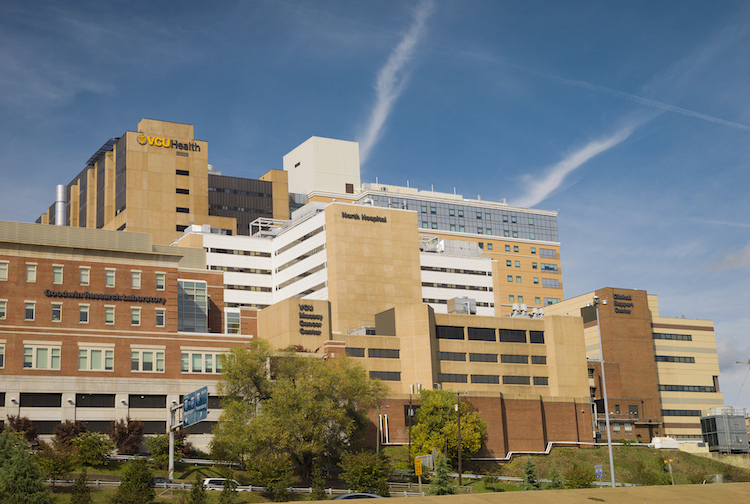
VCU physicians for ultrasounds at every bedside
September 08, 2017
For a quartet of doctors spread across separate departments at VCU Medical Center, bedside ultrasounds are one of the most useful tools at their disposal. Sammy Pedram, Michael Joyce, Paula Ferrada and David Evans — all also assistant professors at the Virginia Commonwealth University School of Medicine — are staunch advocates of using ultrasounds on nearly every patient. “What I realized about ultrasound is that it makes me better,” said Joyce. “It makes my care better. I saw how helpful it was to me, and I wanted to pass that on to other people.” After teaching students the basic theory, Joyce and Pedram like to give the next generation of medical professionals some hands-on experience with ultrasound. Joyce and Pedram are well aware of the importance of hands-on learning in the medical field. “The only way to teach ultrasound it to put your hand on the machine,” Joyce said. “It’s both exciting and makes me jealous,” said Pedram. “I didn’t get to do any of this in medical school.” In another area of the hospital where time is precious and information invaluable, Ferrada, the director of the Surgical Critical Care Fellowship and the surgical and trauma intensive care unit at the VCU Medical Center, is spreading the same message. She is an outspoken supporter of ultrasounds, and has been ever since treating a patient in her third year of postgraduate school. Ferrada remembers struggling to find a method to find out how to treat the critically ill patient, until she used an ultrasound to look at the patient’s heart. “I discovered she did not need more fluid [as we previously thought], but rather an ionotropic support for her heart. I strongly believe this saved her life,” Ferrada said. Ferrada helped usher in the widespread use of ultrasounds in the surgical and trauma intensive care unit, convincing colleagues of their importance. “When I first came, surgeons didn’t do much ultrasound,” Ferrada said. “Now, we train the faculty, we train the residents, we train the fellows, we train the nurse practitioners. Every patient gets an echocardiogram in the unit. That visual information for that person treating the patient is priceless. … That’s what we’ve done in the last seven years. I’m pretty proud of it.” Ferrada sees ultrasounds as irreplaceable technology, and an essential topic for medical students. She doesn't want to keep any of that knowledge to herself. “If you know something really well and you don't teach it, then it’s going to die with you,” she said. “A very good way of never advancing in life is making yourself irreplaceable. I don’t think that’s conducive for good patient care, or a dynamic life.” Ferrada wants every patient who passes through her unit to receive an ultrasound, so whoever is treating that patient can literally see what’s going on. “I think we have been very successful, and I think the reason for that is VCU,” Ferrada said. “VCU is very supportive of outspoken, female surgeons.” The last member of this unofficial team is Evans, director of clinical ultrasound at VCU’s Main Hospital. Evans came to VCU in 2010 to teach medial students and fellow medical staff how to implement ultrasounds into their daily practice. “It only takes a couple experiences on an individual level to convert someone to ultrasound,” Evans said. Joyce and Pedram’s course, and Ferrada and Evans’ passion for implementing it in their own fields, shows how invaluable ultrasounds are to medical educators and practitioners. “It used to be, the physician would go in and use their stethoscope to listen to the patient, and say, ‘Oh, I think this is what’s going on,’” Joyce said. “Now, I can take my ultrasound and see what’s going on.”A look at four doctors, and how they use ultrasound technology to help their patients and teach their students.

Joyce and Pedram both work with some of the most direly ill patients at VCU Medical Center. Joyce works in emergency medicine and Pedram works in the intensive care unit. They have known each other for several years, initially meeting during Joyce’s internship, when Pedram was his attending physician. Last year, when VCU needed instructors for a course in ultrasounds, the two jumped at the chance. 

Evans even taught Joyce when Joyce was a resident at VCU, and he has co-taught courses with Ferrada and Pedram. Along with his colleagues, Evans was instrumental in bringing ultrasound to the forefront of VCU’s medical education and care systems.



